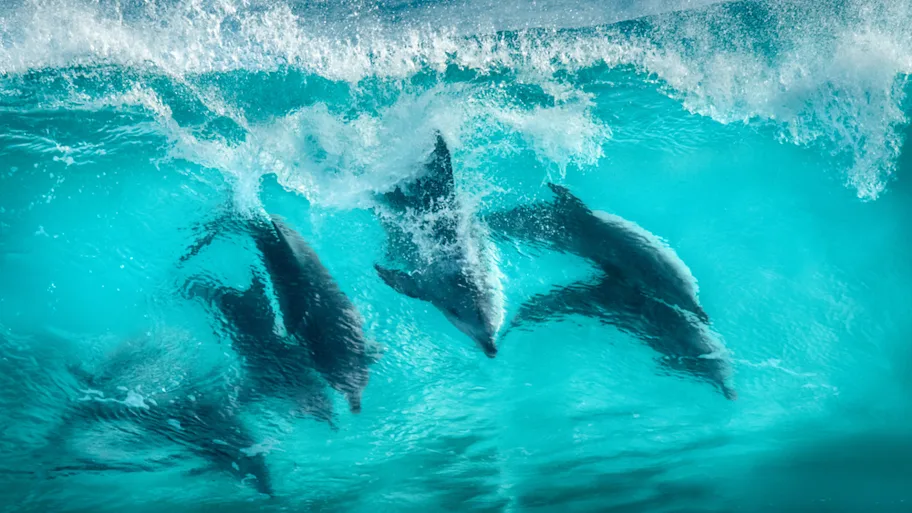
- Science News
- Environment
- High levels of hazardous chemicals found in plastics collected from Lake Geneva
High levels of hazardous chemicals found in plastics collected from Lake Geneva

Plastic debris in freshwater lakes is likely to pose the same problems to wildlife as marine plastics. Image: Shutterstock
A survey of one of Europe’s largest lakes finds a wide range of plastic pollution — some of which could be decades old
— By Tania Fitzgeorge-Balfour, science writer
The first-ever chemical analysis of plastic collected from beaches around Lake Geneva detected cadmium, mercury and lead — sometimes in very high concentrations that exceed the maximum permitted under EU law. The abundance of toxic chemicals that are now restricted or banned in plastic production reflects how old the plastic litter could be, reports the study published in Frontiers in Environmental Science. The study — one of very few to examine plastics in freshwater lakes — indicates that like oceans, freshwater habitats are also affected by plastic pollution.
“Plastic debris in freshwater lakes is likely to pose the same problems to wildlife as marine plastics. In this respect, entanglement and ingestion are of greatest concern,” says Dr. Montserrat Filella, lead author of this research based at the Department F.-A. Forel, University of Geneva, Switzerland.
“The hazardous chemicals we find associated with these plastics is also worrying. When they are eaten by animals mistaking them for food, the acidic and enzyme-rich conditions in the stomach could accelerate how quickly these toxins are released into the body, affecting the animals concerned.”
Dr. Filella collected litter from 12 different pebble beaches around Lake Geneva, one of western Europe’s largest freshwater bodies. She found more than 3,000 pieces of plastic debris, which included identifiable objects (toys, pens, cotton buds), bits of identifiable objects (piping, plant pots, food wrappers), and plastic fragments that couldn’t be identified to their original source, including expanded foam and polystyrene.
“A lot of the plastic was similar to that found on marine beaches, such as bottle tops, straws and polystyrene,” says Dr. Filella. “In contrast, there was an absence of nurdles — pellets used as a basis for plastic production — and a lower incidence of plastic filamentous fibers from commercial fishing, such as rope, netting and cord.”
The lack of these items, often dominant on marine beaches, can be attributed to differences in the use of the marine environment and the freshwater Lake Geneva.
Related news: High levels of microplastics found in Northwest Atlantic fish
More than 600 of the collected plastic items, representing the different types of litter found, were subsequently analysed for toxins using X-ray fluorescence. This is a non-destructive technique that can determine the chemical composition of materials.
“We detected the frequent presence of hazardous elements, such as bromine, cadmium, mercury and lead, in very high concentrations in some cases,” says Dr. Andrew Turner, co-author of the study, based at the University of Plymouth, UK. “The abundance of these toxic elements, which are now restricted or banned, reflects just how long the plastic has been in the lake. For example, mercury is a metal that to our knowledge has not been used in plastics for decades.”
Bromine, present in compounds used in flame retardants, was above the maximum level allowed under RoHS (Restriction of Hazardous Substances — a European Union directive) in 19 plastic items. High levels of cadmium, associated with bright colours, were present in 57 items. Mercury was found in plastic items that were red or reddish-brown, suggesting its use as pigmentation — a process believed to have ended in the 1950s. Lead, used to stabilize or color plastics, was present in nearly a quarter of the items analysed, with 65 of these exceeding RoHS levels.
“Freshwater ecosystems have been largely overlooked with regards to the impact of plastic; most studies thus far have focused on the oceans. This is one of only a handful of studies of plastics in lakes, and the first of its kind to be undertaken in Lake Geneva,” explains Dr. Turner.
Dr Filella continues, “The impacts of plastic-bound toxic elements on lake wildlife are currently unknown but should form the basis of future research.”
Original article: Observational Study Unveils the Extensive Presence of Hazardous Elements in Beached Plastics from Lake Geneva
Corresponding author: Montserrat Filella
REPUBLISHING GUIDELINES: Open access and sharing research is part of Frontier’s mission. Unless otherwise noted, you can republish articles posted in the Frontiers news blog — as long as you include a link back to the original research. Selling the articles is not allowed.






